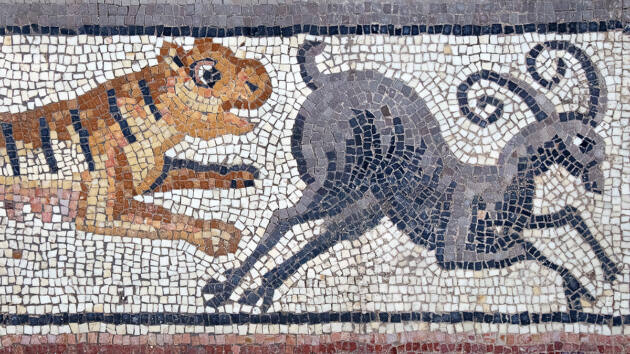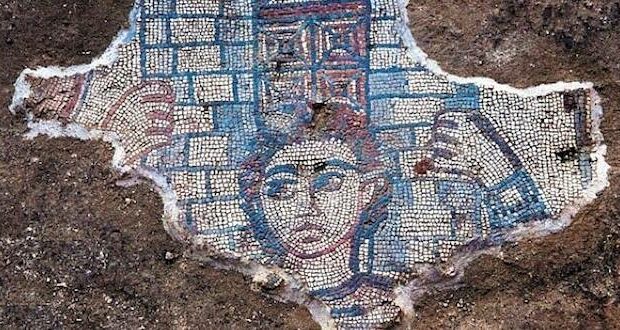Archaeologists have discovered mosaics featuring Samson and other Old Testament stories in the ancient Jewish village of Huqoq, which is located in Israel’s Lower Galilee.
Jodi Magness, an archaeologist and professor of early Judaism at the University of North Carolina, is seeking answers about the impact of early Christian rule on Jewish people. Some of the evidence is found in recently uncovered floors in an ancient synagogue from the time of Christian rule of the region.
The mosaic panels on the synagogue floor depict biblical stories, including Samson and the foxes from Judges 15:4 and Samson carrying the gates of Gaza in Judges 16:3. This summer, additional sections of those mosaic panels were exposed.
A newly discovered mosaic on the floor just inside the main entrance consists of a large panel with a Hebrew inscription contained inside a wreath. An Aramaic inscription lists the names of what appear to be the donors who funded the mosaic or the artists who created them. Other panels depict a tiger hunting an ibex, while another features a Philistine horseman and a dead Philistine soldier.
TOUR ISRAEL: Join us for the trip of a lifetime.
Magness said the discovery of the mosaic was unintentional. Every summer, her team uncovers more mosaics, never knowing what to expect. “But like other sciences, archeologists usually start with a goal of answering one or more research questions in the hopes that the remains that we dig up will help us to answer those questions,” she said.
Magness said she sought to answer questions about the fate of Jewish villages under early Christian rule through the excavation. The village of Huqoq existed during the Roman and Byzantine periods and beginning in the fourth century, the Roman Empire became Christian.
“Many of my colleagues in Israel think the Christian rule was oppressive to Jews and that many of these settlements declined and even disappeared during the fourth, fifth and sixth centuries,” she said. “And my impression from the archeology was always exactly the opposite, that these Jewish settlements continued to exist and even to flourish.”

Tiger chasing ibex. Decorative border panel in the Huqoq synagogue mosaic in Israel.
(Photo by Jim Haberman)
Magness said the findings have implications for understanding the fate of Jews and the fate of Jews after Christian rule, as well as relations between members of the two religions.
Other impressive mosaic finds at the site include:
- A large panel in the northwest aisle depicts Elim, the spot where the Israelites camped by 12 springs and 70 date palms after departing Egypt and wandering in the wilderness without water referenced in Exodus 15:27.
- Figures of animals identified by an Aramaic inscription as the four beasts representing four kingdoms in the book of Daniel, chapter 7.
- A panel depicting two of the spies sent by Moses to explore Canaan carrying a pole with a cluster of grapes, labeled “a pole between two” from Numbers 13:23.
- The first non-biblical story ever found decorating an ancient synagogue—perhaps the legendary meeting between Alexander the Great and the Jewish high priest.
- Another panel shows the inscription “a small child shall lead them” (Isaiah 11:6) and displays a man leading an animal on a rope.
- A mosaic of Noah’s Ark.
- The building of the Tower of Babel
- The miracle of the parting of the Red Sea.
–Dwight Widaman | Metro Voice
 Metro Voice News Celebrating Faith, Family & Community
Metro Voice News Celebrating Faith, Family & Community









